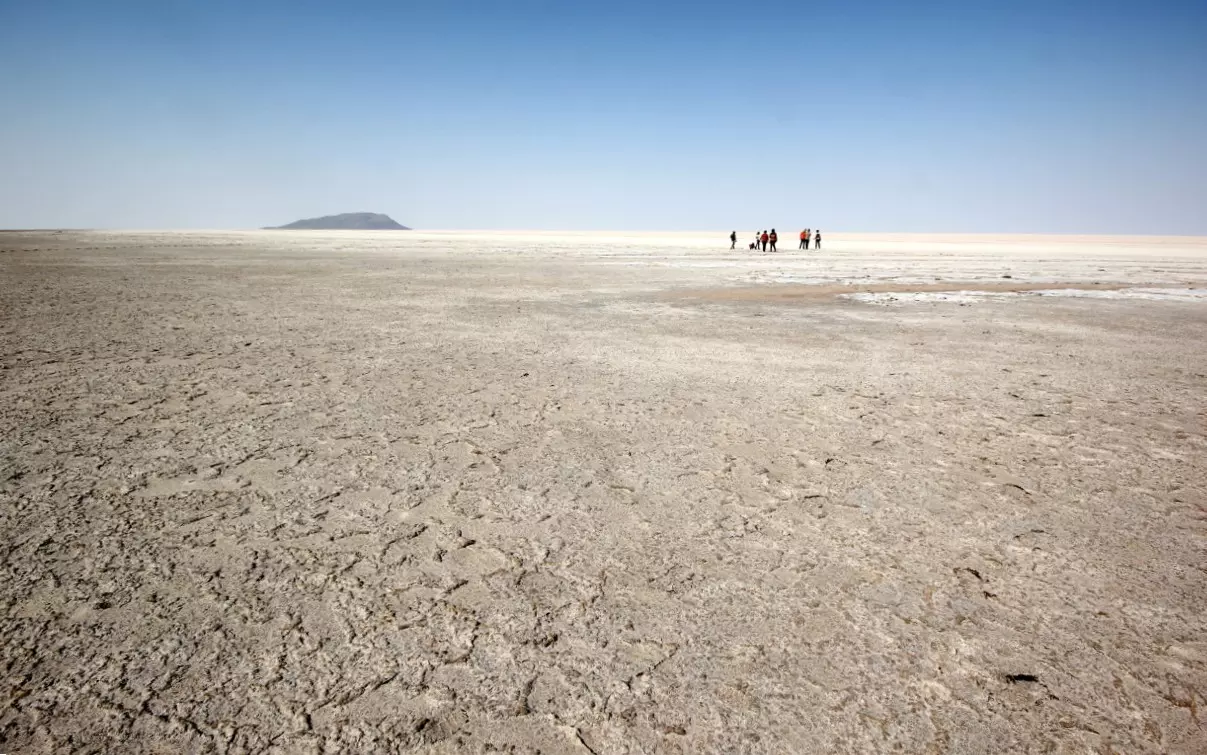
Explained: What is the row over transfer of salt pan land for Dharavi project?
The state government will build transit camps and rental accommodation for slumdwellers on the salt pan lands when the Dharavi Redevelopment Project takes off

As many as 256 acres of salt pan land in Mumbai are all set to be transferred to the Maharashtra government for the benefit of the Dharavi Redevelopment Project.
The Union government will lease the land for 99 years to the Maharashtra government, which will sublease it to the Dharavi Redevelopment Project Private Limited (DRPPL), a joint venture between the Maharashtra government and the Adani Realty.
However, environmentalists are unhappy and the Opposition in the state is crying foul over the transfer of salt pan lands for the Dharavi project. Here’s why.
What are salt pans?
Salt pans are naturally occurring flat and vast expanses of land covered with salt and other minerals. They usually occur in dry or desert areas in coastal regions, where brackish water evaporates faster from land compared to the rainfall that fills those up. If all the water cannot drain into the ground, it evaporates slowly off the surface, leaving behind the dissolved minerals.
Some of the famous salt pans of India include Gujarat’s Dandi, where MK Gandhi led his foot march in 1930 in protest against the salt tax imposed by the British. Gujarat’s Rann of Kutch is also known for its salt pans that turn into salt marshes in monsoon.
The salt pans being transferred for Dharavi project
The Mumbai salt pan lands, spanning Kanjurmarg, Wadala, and Mulund in the eastern parts of the city, are owned by the Salt Commissioner Organisation, a body under the central commerce and industries ministry. The state government had earlier sought approval for 283 acres, though the Centre has okayed the transfer of 256 acres.
The salt-pan plots to be handed over reportedly include the Arthur Salt Works Land (120.5 acres), Jenkins Salt Works Land (77 acres) at Kanjurmarg, Jamasp Salt Works Land (58.5 acres) at Mulund, and Suleman Shah Land (28 acres) at Wadala. The state government had identified these as defunct where the lease has long expired.
What do salt pans have to do with Dharavi project?
The salt pans are the only surviving open spaces in Mumbai. The state government will reportedly build transit camps for slumdwellers on the salt pan lands when the Dharavi Redevelopment Project takes off. Those who are not eligible for free tenements will reportedly be offered rental accommodation on these lands.
The state had initially planned to allocate two plots in Mulund for the resettlement of slumdwellers. But the plan had to be axed after locals protested.
Why are environmentalists upset?
These salt pans are Mumbai’s natural protection from floods. These act as pools of rainwater in the monsoon and dry up and turn into salt pans in the dry seasons.
An environmentalist had told Hindustan Times in February, when the state had decided on the proposal, that many of the eastern suburbs of Mumbai were protected during the 2005 floods as the floodwater had been soaked up by the salt pans.
Another environmentalist had told the newspaper that it would be misleading to think of salt pans as empty spaces that can be used for housing. He had pointed out that these come under the provisions of Coastal Regulation Zone (CRZ) and wetland rules, and are sites of intertidal activity.
Why is the Opposition upset?
Besides raising the environmental factor, the Opposition has claimed that the Modi government can do anything for the benefit of the Adani Group. Four-time former Dharavi MLA and currently Mumbai North Central MP Varsha Gaikwad took to X to slam the government for gifting “Mumbai’s future…to the government’s favourite corporate group”.
“Facing resistance from ordinary residents on selling off Mumbai’s green spaces and public lands, they’re now targeting our precious salt pans—Mumbai’s natural flood shields. Any blanket permission to develop these lands is not just reckless—it’s criminal! This isn’t development—it’s a blatant, greed-fueled land grab which could spell disaster for the city,” wrote Gaikwad.
Shiv Sena (UBT) leader Aaditya Thackeray alleged that the Centre had steadfastly denied salt pan space to the Brihanmumbai Municipal Corporation for 10 years “for a pumping station that would help reduce flooding in the eastern suburbs” of the city. “Salt pan land area that was a complete NDZ [no development zone] for builders, is being given to its favourite builder/ industrialist. Guess why? Because it ruins Mumbai. A city that bjp [sic] hates,” he posted on X.
Row over “ineligible” slumdwellers
Barring salt pans, the Opposition is also upset over certain slumdwellers being dubbed as “ineligible”.
“And their excuse? Housing ‘ineligible’ Dharavi residents! We’ve said it before, and we’ll say it again - We reject this outrageous classification! Dharavikars have built Dharavi brick by brick with their blood and sweat. Every single one of them has the right to be rehabilitated within Dharavi—NO exceptions, NO displacements!” wrote Gaikwad.
Thackeray argued, “If societies of ‘ineligible’ residents from Dharavi are coming up in Mulund, Wadala and Kanjurmarg, who is Dharavi being redeveloped for?? NO resident of Dharavi should be made in ineligible! NO salt pan land should be touched!”

